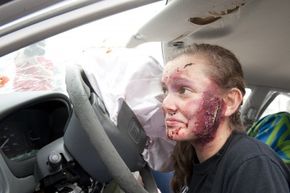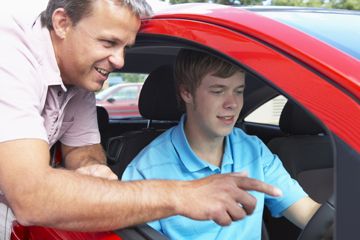All the two sisters and their friends wanted to do was go to the beach. That's what teenagers in Southern California are supposed to do, right? The three girls and two boys, students in the Irvine Unified School District, hopped into a car on a sunny day in May 2013 and headed for the sandy shore. Abdulrahman Alyahyan, 17, a senior at University High School, got behind the wheel of the Infiniti and off they went [source: Flaccus].
According to police, at around 5:20 p.m., the sedan veered off a stretch of asphalt called Jamboree Road, a 55-mph (89-kilometers-per-hour) six-lane boulevard in south Orange County. The Infinity struck a tree with a force so great that the car split, caught fire and ripped the bark off the tree. The accident killed all five passengers. The toxicology report for the driver was clean, and police said speed may have been a factor in what officials described as Newport Beach's worst accident in recent memory [source: CBS Los Angeles].Two of the bodies were so badly mangled that the coroner used fingerprints for identification [source: Flaccus].
Advertisement
The tragic story illustrates the consequences of what can happen when teenagers get behind a wheel. According to the Insurance Institute for Highway Safety, car accidents are the leading cause of death for 13- to 19-year-olds, killing some 3,000 teenagers in the U.S. each year [source: Juva-Brown]. The numbers from the Centers for Disease Control and Prevention offer up similar grim findings: In 2010, seven teenagers a day, ages 16 to 19, died from injuries sustained in motor vehicle accidents [source: CDC].
The simple, horrific truth is that teens are more likely to die in car accidents than older drivers. In fact, teenage drivers, ages 16 to 19, are three times more likely than drivers 20 and older, to be involved in a fatal crash, says the CDC. Among that group, male teens were two times more likely to die in a car crash than females [source: CDC]. In 2011, 4,347 teen drivers, ages 15 to 20, were involved in 10 percent of the 43,688 fatal crashes in the United States [source: NHTSA].
Why are the statistics so grim? We'll dig in next.
Advertisement



